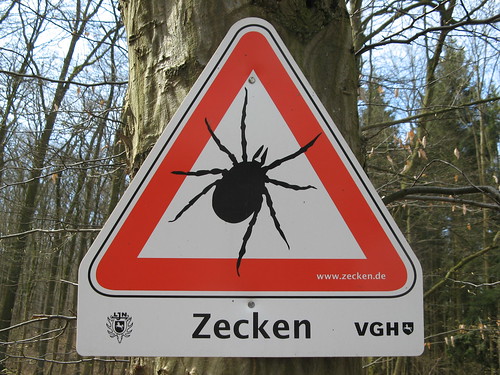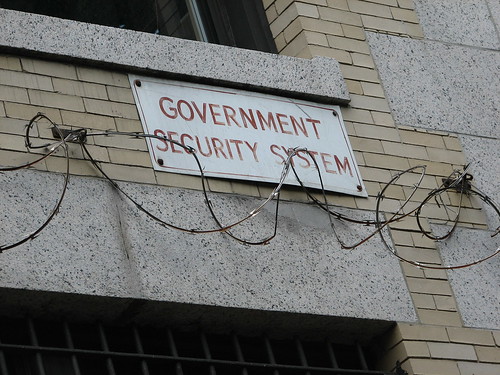In Response to “Cyber Security Coming to a Boil” Comments….
Posted March 24th, 2009 by ian99Rybolov’s comment: This is Ian’s response to the comments for his post on Cybersecurity Coming to a Boil. It was such a good dialog that he wanted to make a large comment which as we all know, eventually transforms itself into a blog post. =)
You are making some excellent points; putting the leadership of the Administration’s new Cyber security initiative directly in the White House might appear to be a temporary solution or a quick fix. From my point of view, it looks more like an honest approach. By that I mean that I think the Administration is acknowledging a few things:
- This is a significant problem
- There is no coherent approach across the government
- There is no clear leadership or authority to act on the issue across the government
- Because of the perception that a large budget commitment will have to be allocated to any effective solution, many Agencies are claiming leadership or competing for leadership to scoop up those resources
- The Administration does not know what the specific solution they are proposing is — YET
I think this last point is the most important and is driving the 60-day security assessment. I also think that assessment is much more complex than a simple review of FISMA scores for the past few years. I suspect that the 60-day review is also considering things like legal mandates and authorities for various aspects of Cyber security on a National level. If that is the case, I’m not familiar with a similar review ever having taken place.

2004 World Cyber Games photo by jurvetson. Contrary to what the LiquidMatrix Security folks might think, the purpose of this post isn’t to jam “cyber” into every 5th word. =)
So, where does this take us? Well, I think we will see the Cyber Security Czar, propose a unified policy, a unified approach and probably some basic enabling legislation. I suspect that this will mean that the Czar will have direct control over existing programs and resources. I think the Cyber Security Czar taking control of Cyber Security-related research programs will be one of the most visible first steps toward establishing central control.
From this we will see new organizational and reporting authorities that will span existing Agencies. I think we can also anticipate that we will see new policies put in place and a new set of guidelines of minimum level of security capabilities mandated for all Agency networks (raising bottom-line security). This last point will probably prove to be the most trying or contentious effort within the existing Agency structure. It is not clear how existing Agencies that are clearly underfunding or under supporting Cyber Security will be assessed. It is even less clear where remedial funding or personnel positions will come from. And the stickiest point of all is…. how do you reform the leadership and policy in those Agencies to positively change their security culture? I noticed that someone used the C-word in response to my initial comments. This goes way beyond compliance. In the case of some Federal Agencies and perhaps some industries we may be talking about a complete change sea-change with respect to the emphasis and priority given to Cyber Security.
These are all difficult issues. And I believe the Administration will address them one step at a time.
In the long-term it is less clear how Cyber Security will be managed. The so-called war on drugs has been managed by central authority directly from the White House for decades. And to be sure, to put a working national system together that protects our Government and critical national infrastructure from Cyber attack will probably take a similar level of effort and perhaps require a similar long-term commitment. Let’s just hope that it is better thought-out and more effective than the so-called war on drugs.
Vlad’s point concerning Intelligence Community taking the lead with respect to Cyber Security is an interesting one, I think the Intelligence Community will be important players in this new initiative. To be frank, between the Defense and Intelligence Communities there is considerable technical expertise that will be sorely needed. However, for legal reasons, there are real limits as to what the Intelligence and Defense Communities can do in many situations. This is a parallel problem to the Cyber Security as a Law Enforcement problem. The “solution” will clearly involve a variety of players each with their own expertise and authorities. And while I am not anticipating that Tom Clancy will be appointed the Cyber Security Czar any time soon. I do expect that a long-term approach will require the stand-up of either a new organization empowered to act across current legal boundaries (that will require new legislation), or a new coordinating organization like the Counter Terrorism Center, that will allow all of the current players bring their individual strengths and authorities to focus on a situation on a case by case basis as they are needed (that may require new legislation).
If you press me, I think a joint coordinating body will be the preferred choice of the Administration. Everyone likes the idea of everyone working and playing well together. And, that option also sounds a lot less expensive. And that is important in today’s economic climate.
Similar Posts:
Posted in FISMA, Public Policy, Technical |  2 Comments »
2 Comments »
Tags: blog • cashcows • dhs • einstein • fisma • government • incidentresponse • infosec • infosharing • itsatrap • law • legislation • management • publicpolicy • pwnage • scalability • securitylob
 Posts RSS
Posts RSS





